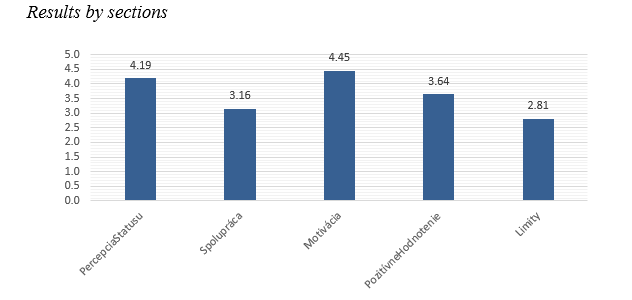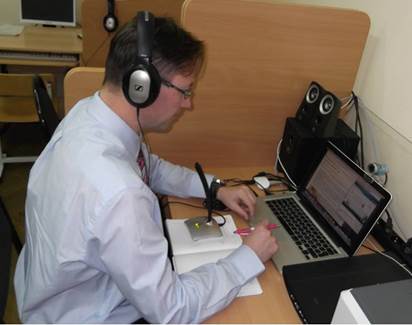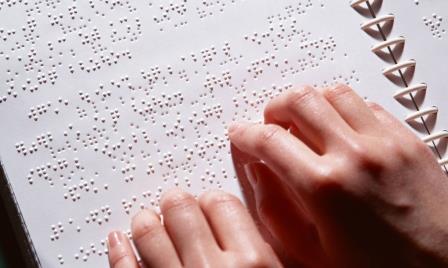Schools must imperatively react to constant and rapid developments in all spheres of social life, thus placing ever higher demands on them. Schools are one of the crucial actors in education and socialisation, but can also be a place where a pupil first encounters elements of social pathology such as drug consumption, bullying, criminality, physical and mental abuse etc. According to O. Matoušek and A. Kroftová (5, p. 78), pupils from dysfunctional families, not doing well at school, with a high potential for aggression, who are unable to submit to the rules of school behaviour and create their own value preferences are at higher risk of failure. For this reason, school plays an important role in the process of prevention of socio-pathological phenomena.
As far as preventing drug addiction in children and youth is concerned, it is necessary to create and identify internally with positive social standards which might form certain barriers in individuals at risk of pathological behaviour. Children must be given space to discover themselves, their moral qualities, their insufficiencies, and above all to shape their own self-respect.
And it is the very environment of the school which provides space for meeting these needs, as well as being a space where each prevention programme can be expertly planned and carried out.
Definition of prevention, its function and objectives
Prevention (prophylaxis), according to the general concept, means avoiding, limiting the occurrence of an illness or unwanted phenomenon (6, p. 9). So we understand prevention as a set of measures which might prevent unwanted phenomena, for example addiction.
The World Health Organisation (WHO) defines prevention as «a set of interventions, the objective of which is to reduce or limit the occurrence, spread and harmfulness of the effects of alcohol and non-alcohol based drugs». According to Ondrejkovič (7, p. 285), the term of prevention is generally perceived «as an activity, the aim of which is to prevent, or minimise problems of various types, in our case the consumption of drugs and the creation of an addiction».
In the most general sense of the term, prevention is understood «as the path to strengthening health or the path to avoiding various forms of risky behaviour in individuals at various stages of their journey in life» (8, p. 11). A complex definition of prevention was given by Levická (11, p. 10), who characterised prevention «as an activity to prevent something in a positive sense, as an activity aimed at minimising anti-social problems which occur in the life of individuals, families, groups and even communities». She calls prevention «an action which prevent the occurrence of such problems».
The objectives of school-based prevention, according to J. Verbovská (13, p. 11) are:
a) to change interactive relations in the school, to replace an authoritative atmosphere with a humanist-creative education;
b) to support the harmonious development of the pupil’s personality;
c) to prioritise a healthy lifestyle in school and out-of-school activities;
d) to create conditions to shape a pupil’s healthy personality and his/her resistance to pathological social influences and pressure;
e) to educate pupils in taking personal responsibility for their decisions;
f) to create space in school to help solve pupils’ problems (family, social, personal, educational etc.);
g) to support the development of positive relations in a social context;
h) to inform pupils about the given issue in a systematic and complex manner;
i) to develop pro-social behaviour in children in order to prevention addictions;
j) pedagogical educational action in order to improve the feedback pupil – teacher – school – family.
The strategies of prevention programmes are focused on the following types of education:
- Effective – this approach is characterised by deepening self-awareness, self-understanding and self-acceptance via activities which enable the classification of values and decision-making by taking on responsibility. It focuses on improving interpersonal relations, effective communication, assertiveness and developing young people’s abilities to meet their basic needs.
- Socio-psychological – this approach contains components which change the level of behaviour [1].
Exposure to a weak dose of social pressure – psychological vaccination – is also included here, a method which will facilitate the development of antibodies in order to increase resistance against social pressures. Many prevention programmes are based on the concept of social influence through aptitudes to refuse drugs.
A further component of the prevention model is the correction of the normative expectation.
- Using peer leaders. The concept of the development of life aptitudes in the prevention of drug addiction includes teaching skills important for a growth in independence, subjective control and the awareness of deliberation.
The above-mentioned strategies are linked by an attempt to develop general social aptitudes which are development by modelling and strengthening a taught behaviour using influence by knowledge, attitudes and opinions.
School as part of the system for helping in the area of drug prevention
From the point of view of the status of school in society, the function which the school actually fulfils is important.
Prokop (1996) mentions four basic functions:
a) personalising – which testifies to the shaping of a young person’s personality, forming together his/her attitudes, and shaping him in the required direction; b) qualifying – which prepares pupils for their inclusion in the work process, for a future occupation – this function has always been the key function of schools; c) socialising – which shapes the pupils’ value system, attitudes and opinions; in a world which impacts children from many different sides, it is important to know one’s priorities and to be able to put forward the correct opinion; d) integrating – which is growing in importance, since it helps inclusion in society [9, p. 8]. Integration into today’s society is becoming a problem for an ever growing number of young people, because this society is changing through social and political change, population migration and other dynamic changes.
When teaching, there are situations which teachers must resolve immediately and quickly. Certain situations in school can induce a feeling of stress, helplessness and injustice in pupils, as well as tiredness, lack of concentration etc. It depends on the teacher as to how sensitively he/she perceives such situations and how he/she solves them. A sensitive and individual approach by the teacher to the pupils, the willingness to help them solve problems are essential activities for preventing negative phenomena. If the teacher has discussions with the pupils, expresses an interest in their opinions, explains everything they do not understand and does not disappoint them, he/she will obtain their trust [2].
The tasks and specific features of the work of a class teacher – school prevention specialist
This is a teacher who is «prepared in an expert manner for educational consultancy in the field of prevention, paying particular attention to prevention and monitoring the behaviour of children and young people from the point of view of pedagogical, psychological and social standards, ascertaining negative phenomena and disorders and correcting them» [12, p. 7].
One of the members of the teaching staff is designated for the function of school prevention specialist by the school headmaster. The status of pedagogical employee, as defined in Section 2 of Act no. 563/2004 Coll. on pedagogical employees as amended, is a prerequisite for performing the task of school prevention specialist. According to this act, it may therefore be a person meeting the qualification of a teacher, educator, special needs teacher, psychologist, after-school club teacher, teaching assistant, coach or management teaching employee.
Tyšer (2006) mentions several criteria which need to be taken into account when choosing a class teacher – prevention specialist. Such a teacher should meet the following criteria:
- be interested in holding the position of school prevention specialist,
- have the personal and specialist prerequisites,
- have at least 2 years of experience,
- have the trust of pupils and a natural authority among colleagues,
- be interesting in further training,
- be willing to devote sufficient time to his/her job.
Compared the previous period, there has been a fundamental change in the content of the activity of a school prevention specialist. At first, this function was labelled and shaped as a drug prevention coordinator. After 2000, the extent of the activities began to widen, and the subject of their work became not only drug prevention, but also the prevention of socio-pathological phenomena, focusing on preventing the risky behaviour of pupils and students through a prism of ever-changing social relations. When carrying out his/her function, the school prevention specialist focuses mainly on working with problematic children, and adapts his/her activity to this effect. He/she also provides consultancy, in particular in the field of cooperation with the family.
Preparation and training of class teachers – prevention specialists
This is a systematic, uninterrupted and coordinated process which lasts for the whole course of the teacher’s / specialist’s career. In fact, we can say that it is a life-long development of a teacher’s / specialist’s professional competencies and a permanent development of their personality. The further education of teaching staff is a basic supposition for the transformation of schools, and the most effective form of balancing the content, method of education and training with rapid changes in a socio-cultural and economic and technical context.
According to Průcha (2009), in a wider sense, the training of teachers has the following characteristics:
a) We see the further training of teachers as a life-long development of professional competencies. This development follows on from the preparatory education itself (specialist education).
b) In the further training of teachers, we include all activities which serve to maintain and increase his / her professional skills, following on from the teacher’s current acquired qualification.
c) We also include here all educational activities in which the teachers themselves are involved in order to expand and improve their knowledge and skills to date, and also to develop their professional approaches.
When conceiving the research, we based ourselves on an analysis of relevant literature and our own many years of experience in the given area. The questionnaire is composed of the following sections:
- The perception of the status of coordinator / school prevention specialist – how the coordinator/ school prevention specialist thinks that his / her function is perceived by his/her surroundings (parents, colleagues, pupils etc.).
- Cooperation with school staff – how the coordinator / school prevention specialist evaluates the level of cooperation with other teachers within the school in which he/she works.
- Motivation for the function of coordinator / school prevention specialist – evaluation of own motivation to carry out this function and opportunities for career growth.
- Positive evaluation of own work – own self-evaluation of the function of coordinator/ school prevention specialist.
- Limits of the impact of own work – self-evaluation of own actions in this position, taking into account certain factors.
When preparing the scales, we used the Likert scale consisting of a statement and numerical scale with 5 positions. The coordinator / school prevention specialist expressed the level of his / her agreement / disagreement with the statement on this scale:
| Statement | 1 | 2 | 3 | 4 | 5 |
| Strongly disagree | Disagree | Neither agree nor disagree | Agree | Strongly agree |
The reliability of each section of the questionnaire was ascertained using Cronbach’s alpha. Items within each questionnaire section were correlated with other items of a given component (item-total correlation). Items with a low or even negative correlation were excluded from the component. Thus the homogenous composition of questionnaire sections was achieved, meaning that the section has an appropriate reliability.
| Name of section | Number of items | Alpha reliability |
| Perception of the status of coordinator | 7 | 0,897 |
| Cooperation with school staff | 4 | 0,834 |
| Motivation for the function of coordinator | 7 | 0,917 |
| Positive evaluation of own work | 4 | 0,602 |
| Limits of impact of own work | 4 | 0,624 |
The first three sections of the questionnaire have the reliability required of professional survey tools. The next two sections have a lower reliability, mainly due to the low number of items. In methodology, it is known that the number of items in the section plays an important role in its reliability. Even with a reliability of around 0.60, we consider the reliability of the last two sections of the questionnaire to be sufficient for the purposes of a non-representative survey.
We carried out the face validity based on our own evaluation of the suitability of the text of the items in terms of the questionnaire section. We tested the relation between sections of the questionnaire with a correlation coefficient.
Intercorrelations between questionnaire sections
| Perception of status | Cooperation | Motivation | Positive evaluation | Limits | ||
| Perception of status | Pearson Correlation | 1 | 0,017 | 0,973** | 0,770** | -0,218* |
| Sig. (2-tailed) | 0,873 | 0,000 | 0,000 | 0,037 | ||
| N | 92 | 92 | 92 | 92 | 92 | |
| Cooperation | Pearson Correlation | 0,017 | 1 | -0,036 | 0,441** | -0,918** |
| Sig. (2-tailed) | 0,873 | 0,736 | 0,000 | 0,000 | ||
| N | 92 | 92 | 92 | 92 | 92 | |
| Motivation | Pearson Correlation | 0,973** | -0,036 | 1 | 0,747** | -0,147 |
| Sig. (2-tailed) | 0,000 | 0,736 | 0,000 | 0,163 | ||
| N | 92 | 92 | 92 | 92 | 92 | |
| Positive evaluation | Pearson Correlation | 0,770** | 0,441** | 0,747** | 1 | -0,562** |
| Sig. (2-tailed) | 0,000 | 0,000 | 0,000 | 0,000 | ||
| N | 92 | 92 | 92 | 92 | 92 | |
| Limits | Pearson Correlation | -0,218* | -0,918** | -0,147 | -0,562** | 1 |
| Sig. (2-tailed) | 0,037 | 0,000 | 0,163 | 0,000 | ||
| N | 92 | 92 | 92 | 92 | 92 | |
* Correlation is significant at the 0.05 level (2-tailed).
** Correlation is significant at the 0.01 level (2-tailed).
The main results are given in the following graph. The higher the number, the better and the more valuable the given result. As can be seen, in all sections (except the «Limits» section), the data is above the middle value of the scale (which is 3 points), showing the good level of coordinators in individual researched sections. The highest scores are shown in the dimension of «Motivation», which is gratifying – coordinators understand sufficiently clearly the importance of their status. Coordinators achieved only a slightly lower result in the section «Perception of Status». The other sections follow with a small difference.

1. Perception of the status of class teacher – prevention specialist.
The prevention specialists themselves, both men and woman, consider the execution of their function as very useful, while having the feeling, however, that this function is not appreciated to its full value in the school. In their opinion, even their colleagues do not value this function sufficiently; they do not know the content of this activity and perceive this function only as an opportunity to improve a salary. According to the specialists, parents, too, as one of the school’s key partners in prevention, consider this function as difficult and responsible, as well as a pointlessly remunerated function.
2. Cooperation with school staff.
They were not able to express themselves unanimously on cooperating with the school management during the preparation of the annual prevention plan. Perhaps this function is truly considered as a formality, and this is how the school management approaches it, as well as other school staff, because the specialists did not reply unanimously to this question, either. Not all school staff has the same opinion on the use of psychoactive substances and a healthy lifestyle, but they were also unable to express themselves unanimously on this subject, as to whether their cooperation with other school staff fails as a result of differing attitudes to drug use. The ambiguity of answers in this category can be indicative of the fact that the prevention specialist is dependent only on himself/ herself from his/her point of view or, in our opinion, the whole preventive activity is carried out only on a formal level.
3. Motivation for the function of class teacher – prevention specialist.
Class teachers declare that the function of prevention specialist is given only to a teacher for whom nothing better has been found, but they also regard this function as highly as their own subjects. They perceive this function as an opportunity for their own career growth; for them, it is an opportunity for personal development, self-realisation, another opportunity to gain new contacts with experts, it is an opportunity to participate in training courses, while, however, regarding the function of coordinator as a purely formal affair (since this category has a high score, we can consider our assumption on the formality of the function from the previous category to be confirmed).
4. Evaluation of own work – abilities.
This category presents the self-evaluation of the prevention specialist in performing this function in the sense of self-efficacy, yet they declare an «uncertain agreement» with the statement that they are able to incite interest in the issue of drug addiction among pupils, as well as being objective and just when solving problems. We can assume that they are not entirely convinced that they are able to be of support to the pupils when resolving problems in the area of social pathology, and they also do not express unanimous agreement with their satisfaction carrying out programmes and activities under their own leadership.
5. Limits of the impact of their own work.
Class teacher – prevention specialists expressed that to a certain extent they have the opportunity of also influencing the pathological behaviour of pupils’ parents (the oft-declared cooperation between school and family), and to a certain extent they are able to deal with difficult cases of social pathology. Their influence on the pupils, compared to the influence of peers, or parents, is also not negligible, in their opinion.
The essence of prevention lies in the ratio between protective factors (expression of trust, love, interest) and risk factors expressed in the education process, and in the environment. For this reason, it is necessary to look for and find situations in life which bring a feeling of joy, satisfaction, self-realisation, for example via various leisure activities. Effective approaches in prevention are not based on didactic methods, or strict prohibitions and orders. They must be based on the harmony of a personality, and act not only on the cognitive (inform, teach) element, but also on the emotive (forming a conviction on the rightness and need of a behaviour which matches the standards of the society and identify with them) and conative (knowing how to behave in function of this, and being governed by the given standards) ones [3].
In relation to this, and based on our findings, several fundamental questions are raised in terms of the work and tasks of the teacher – coordinator for the prevention of drug addictions and other socio-pathological phenomena in school, as part of their preventive actions:
- what is the status of the class teacher – specialist for the prevention of drug addictions and other socio-pathological phenomena in the institution itself, that is in the school, i. e. the status vis-à-vis the school management, colleagues and pupils themselves?
- what is the status of the class teacher – specialist for the prevention of drug addictions and other socio-pathological phenomena outside the school, meaning in relation to the social environment of the pupils, social environment of his / her colleagues from among the teaching staff and what is his / her status vis-à-vis other relevant institutions?
- based on what key does the headmaster of the school appoint individual class teachers as specialist for the prevention of drug addictions and other socio-pathological phenomena?
When looking for the answers to these questions, it is appropriate to think a little about the preparation of future teachers at universities. Universities should also prepare students indispensably within each study programme for work on the prevention of socio-pathological phenomena and pay attention to, or create, sufficient space for work experience carried out in institutions which deal with the issue of social pathology and thus enable them to gain the widest possible portfolio of knowledge, or change their current opinions and attitudes concerning the given issue. Our unanimous recommendation is that the preparation of prevention specialists should be cyclical and systematic and that it should also contain elements which develop the personality, which is the exact ground for universities having a vision for the specialised preparation of prevention specialists, with the objective of making this function completely professional.
References
- Botvin, G. J. Drug abuse prevention curricula in schools / G. J. Botvin, K. W. Griffin // Sloboda Z., & Bukoski J. (eds.). Handbook of Drug Abuse Prevention: Theory, Science, and Practice. – New York : Springer, 2006. – P. 45–74.
- Kašparová, Z. Ako poznám sám seba / Z. Kašparová, T. Houška, M. Uhereková/ − Bratislava : CKH, s.r.o. vydavateľstvo Poľana, 1998. − 55 s.
- Kraus, B. Prevencia kriminality detí a mládeže / B. Kraus // Sociálna prevencia. – 2011. − 55 s.
- Matoušek, O. Mládež a delikvence: [možné příčiny, současná struktura, programy prevence kriminality mládeže]. Vyd. 1 / O. Matoušek, A. Kroftová/ − Praha : Portál, 1998. − 335 s.
- Miovský, M. Vybrané termíny primární prevence / M. Miovský a kol. – Praha : Ministerstvo školství, mládeže a tělovýchovy, 2007. – S. 9.
- Orosová, O. Pomoc – Prevencia – Rovesníci alebo «Preventívne nie nepoškodí»: inovatívne metódy v prevencii drogových závislostí v školskej praxi / O. Orosová. – Košice : Univerzita Pavla Jozefa Šafárika, 2003.
- Prokop, J. Škola jako sociální útvar / J. Prokop. – Praha : Univerzita Karlova, Učební texty z didaktiky, 1996. – 44 s.
- Průcha, J. (ed.). Pedagogická encyklopedie. Vyd. 1 / J. Průcha. – Praha : Portál, 2009. – 936 s.
- Tyšer, J. Školní metodik prevence: soubor materiálů. Vyd. 1 / J. Tyšer. – Most : Hněvín, 2006.
- Verbovská, J. Prevencia závislostí a koordinátor prevencie závislostí a iných sociálno-patologických javov v podmienkach školy a školských zariadení – teoretické východiská / J. Verbovská // Nový obzor. – Prešov, 2005. – S. 11–18.
- Liba, J. Zdravie, drogy, drogová závislosť: terminologické a výkladové minimum / J. Liba/ − Prešov : Rokus, 2001. – 83 s.
- Ondrejkovič, P. Sociálna patológia. 3. dopl. a preprac. vyd. / P. Ondrejkovič. – Bratislava : VEDA, vydavateľstvo SAV, 2009. – S. 580.
- Schavel, M. Sociálna prevencia. 3., dopl. vyd. / M. Schavel. – Bratislava : Vysoká škola zdravotníctva a sociálnej práce sv. Alžbety, 2010. – 266 s.












